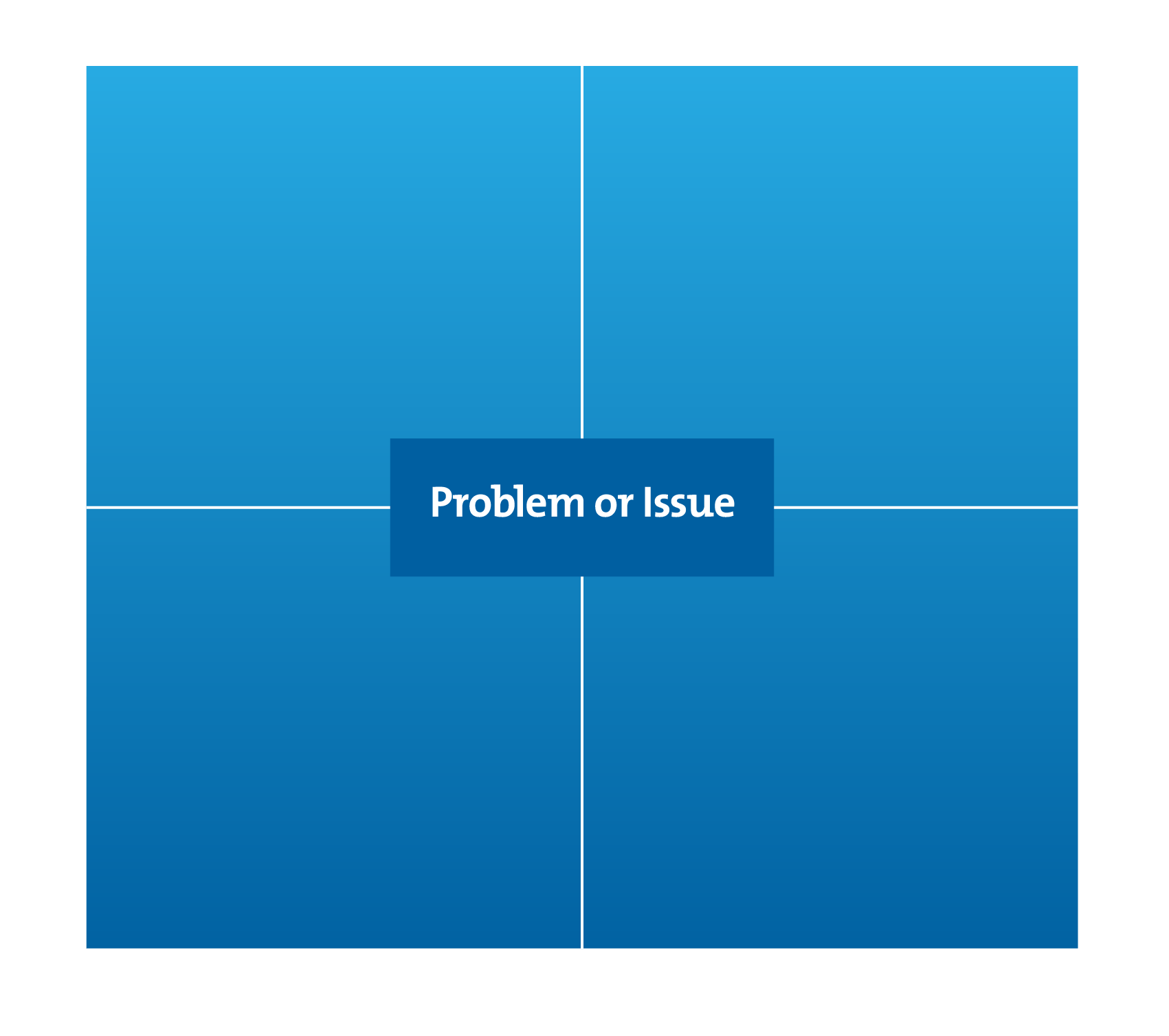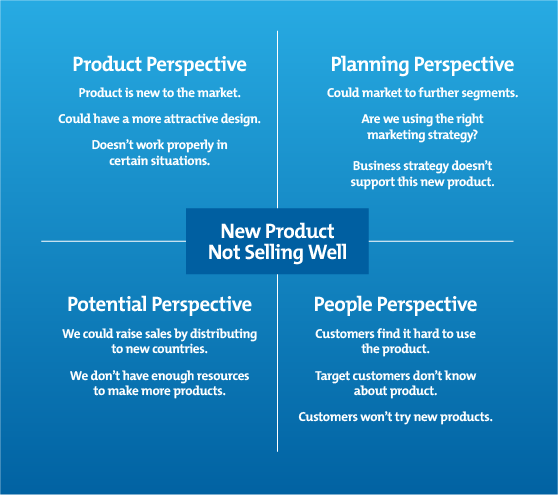The Reframing Matrix
Using Creative Perspectives to Solve Problems
When you're stuck on a problem, it often helps to look at it from another perspective. A "fresh pair of eyes" can be all that you need to come up with a great solution.
But sometimes it's difficult to think about what this new perspective might be. You may be so used to dealing with a situation in the same way that you simply can't see any alternative. And, as a result, you may miss out on a better, more efficient, or longer-term answer to your problem.
This is when the Reframing Matrix can help. In this article and in the video, below, we'll look at how you can use this simple tool to look at problems from different points of view.
Click here to view a transcript of this video.
About the Matrix
The Reframing Matrix tool helps you to look at business problems from various perspectives. You can use these perspectives to generate more creative solutions.
The technique was created by Michael Morgan, and published in his 1993 book, "Creating Workforce Innovation." Morgan identified that different people with different experiences will likely approach problems in different ways. The matrix helps you to put yourself into the minds of these people, to imagine the ways that they would face the problem, and to explore the possible solutions that they might suggest.
How to Use the Reframing Matrix
The Reframing Matrix is very easy to use. Here's how to apply the tool in three steps:
Step 1: Draw the Grid
Start by drawing a simple four-square grid, but leave a space in the middle of the grid. Then, in the space, write down the problem that you want to explore.
Figure 1 – Reframing Matrix Step 1

Tip:
Sometimes, you know there is a business problem that you need to solve, but you're not sure what's causing it. If this applies to you, tools like the Simplex Process and Root Cause Analysis can help you to define your problem clearly.
Step 2: Decide on Perspectives
Now, decide on four different perspectives to use in your matrix. Two useful approaches for doing this are the 4Ps Approach and the Professions Approach.
The 4Ps Approach (not to be confused with the 4Ps of Marketing) helps you to look at problems from the following perspectives:
- Product Perspective: Is there something wrong with the product or service? Is it priced correctly? How well does it serve the market? Is it reliable?
- Planning Perspective: Are our business plans, marketing plans, or strategy at fault? Could we improve them?
- Potential Perspective: How can we increase sales, or productivity? If we were to seriously increase our targets, or our production volumes, what effect would it have on the problem?
- People Perspective: What are the people impacts and people implications of the problem? What do people involved with the problem think? Why are potential customers not using or buying the product?
These examples are just some of the questions that you can ask as you look at your problem using these four perspectives.
The Professions Approach helps you to look at the problem from the viewpoints of different specialists, or stakeholders. For instance, the way a doctor looks at a problem would be different from the approach that a civil engineer or a lawyer would use. Or, the way a CEO views a problem may be different from the way an HR manager sees it.
This approach can be especially useful when you're trying to solve a problem that involves many different types of people, or if you need to step away from your usual way of thinking so that you can be more innovative.
Step 3: Brainstorm Factors
The final step is to brainstorm factors related to your problem from each perspective, and to enter your findings in the appropriate quadrant of the matrix.
If you find yourself slipping into habitual modes of thinking, you could involve other team members in the process, too. Divide them into groups and ask each group to think about the problem from one of the four different perspectives. Or, try collaborating with co-workers from other areas of your organization – their knowledge may help to generate fresh insights.
Once you've completed the matrix, you'll have a better understanding of your problem, and you'll be able to generate more solutions.
Tip 1:
The Perceptual Positions and Six Thinking Hats techniques can also be useful when you want to see things from other people's viewpoints.
Tip 2:
Our article on CATWOE offers a similar approach. This asks you to look at a problem from the perspectives of Customers, Actors, the Transformation process, the World view, the Owner, and Environmental constraints.
Example Reframing Matrix
In the example in figure 2, below, a manager has used the 4Ps approach to explore why a new product is not selling well.
Figure 2 – Example Reframing Matrix

Example Reframing Matrix adapted from Morgan, M. (1993), 'Creating Workforce Innovation,' West Chatswood, Australia: Business & Professional Publishing, p75, by permission of Allen & Unwin.
Key Points
The Reframing Matrix tool was created by Michael Morgan, and published in his book, "Creating Workforce Innovation." It helps you to look at a problem from different perspectives.
Use the tool by drawing a simple four-square grid and writing your problem or issue in the middle of the grid.
Then, choose four different perspectives that you will use to look at your problem, and brainstorm factors related to your problem from each of those perspectives.
This site teaches you the skills you need for a happy and successful career; and this is just one of many tools and resources that you'll find here at Mind Tools. Subscribe to our free newsletter, or join the Mind Tools Club and really supercharge your career!






I wonder why the people perspective is not first or second to the product perspective. Each of these have significant importance.
I don't mind which order these are suggested in but only if they are all view as equally important as I am sure this is what is intended by the four perspectives.
This is a good method to gather and assess options and issues that need planned and an action taken.
Doing some more reading, yet to find something more useful to add.
Let you know what I find.
Bigk